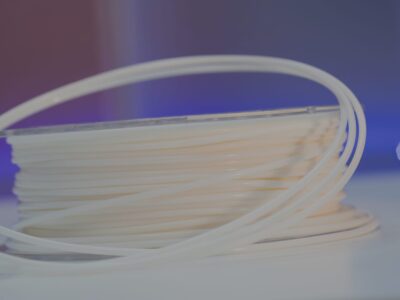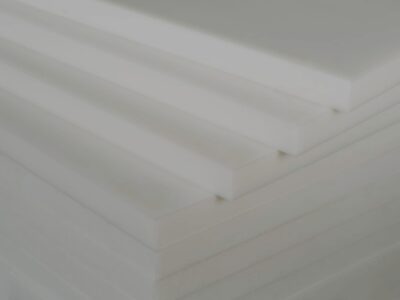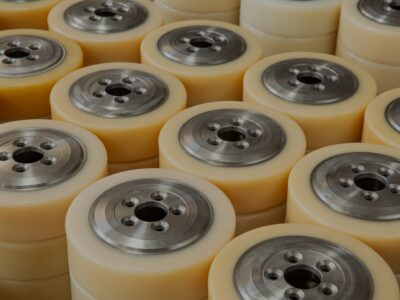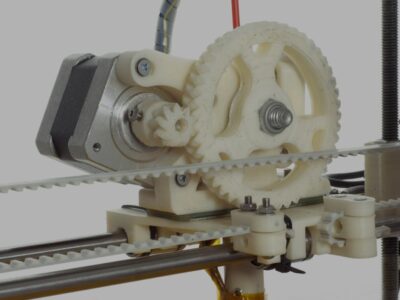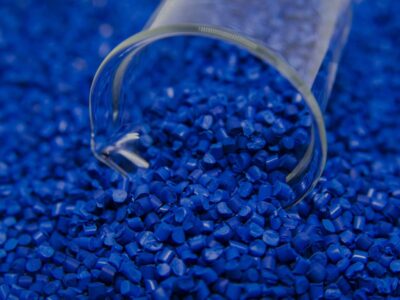Previously published on fastradius.com on November 12, 2020
When product designers and engineers want a part to have certain properties like shock absorption or high impact strength, they often turn to polymers made out of thermoplastic elastomers.
Thermoplastic elastomers are a class of polymers that have both thermoplastic and elastomeric properties, meaning they’re heat-resistant and durable, but still flexible. Since thermoplastic elastomers can be melted and reshaped without compromising the material’s chemical or mechanical properties, the scrap can even be re-used as a partial replacement for virgin plastic. Parts made from this material can be manufactured using a variety of processes, including extrusion, injection molding, and blow molding.
TPE (thermoplastic elastomer) and TPU (thermoplastic polyurethane) are among the most popular categories of thermoplastic elastomers — and while many use the terms interchangeably, they have some key differences. For starters, TPEs are a category encompassing a wide variety of thermoplastic elastomers while TPU only refers to a smaller subset. TPU is also newer to the manufacturing industry than TPE.
Here’s a comprehensive breakdown of the key differences between the terms TPE and TPU, and what aspects of these to take into consideration when making a material selection.
An Overview of TPE
TPE, also known as thermoplastic rubber, combines the look and feel of standard rubber with the ease of use of a plastic. This large category covers a wide range of polymers including TPU, thermoplastic copolyester (TCP), and thermoplastic polyamine (TPA). This material is known for its elasticity, processability, recyclability, high melting temperature, and resistance to weathering.
The mechanical specifications for each kind of TPE will vary by brand. For example, the mechanical specifications for the K2702 thermoplastic elastomer from Kent Elastomer Products include:
- Shore A hardness: 29A
- Tensile at break: 1100 psi (7.6 MPa)
- Elongation: 950%
- 300% modulus: 175 psi (1.2 MPa)
- 500% modulus: 330 psi (2.3 MPa)
- Operating temperature: -40 to 195°F (-40 to 91°C)
TPE is the polymer of choice for any application that must be soft to the touch and feature good elastic or non-slip properties. They are also ideal for applications in which a part must conform to a companion part. Common commercial uses for TPE include pencil grip handles, grips for hockey sticks, toys, and ski boots. In the medical industry, TPEs can be found in resuscitator parts, connectors, and mouthpieces. In the automotive industry, TPE is used in weatherproof seals, floor mats, interior and exterior parts, airbag covers, and bumpers.
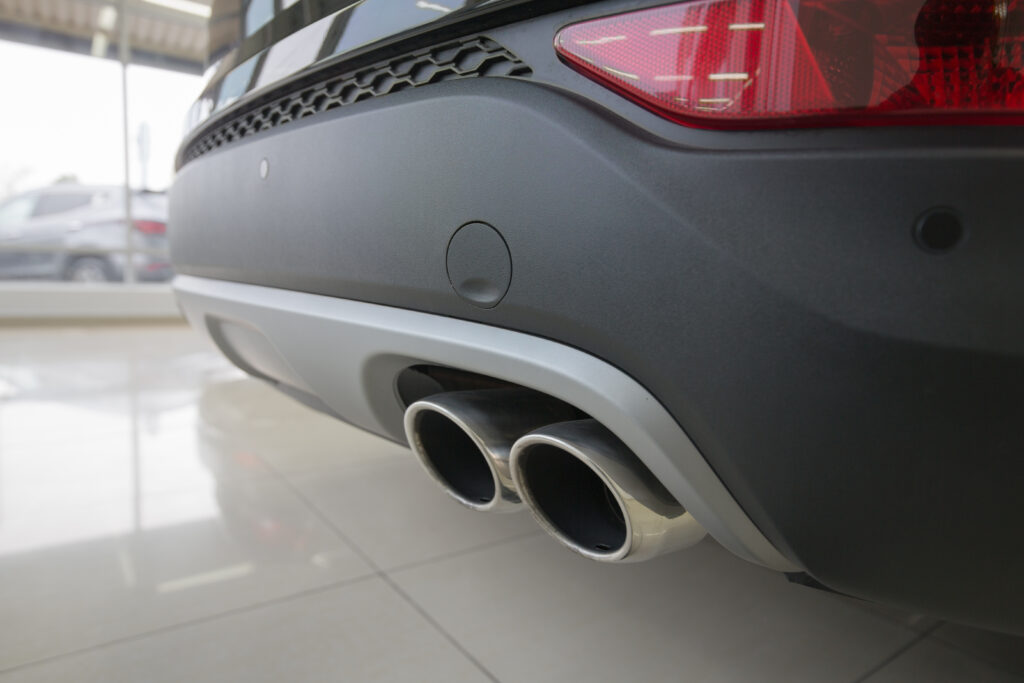
TPEs offer numerous advantages over comparable plastics, including conventional rubber materials. TPEs are faster to process and have shorter fabrication times than rubbers, which reduces the final cost of the finished part. Shorter molding cycles also boost energy efficiency. In comparison to TPU overall, TPEs can be more elastic.
TPEs do have a few limitations that product teams should keep in mind. For example, TPEs have been known to melt at extremely high temperatures and should only be used for parts whose uses will subject it to temperatures within the manufacturer’s specified temperature range. TPEs generally perform worse under heavy loads and have less chemical and temperature resistance than traditional thermoset rubbers. Also, most TPE materials must be dried prior to processing, so designers must be careful not to forget this crucial step.
An Overview of TPU
Thermoplastic polyurethane (TPU) is the subset of strong, multi-purpose thermoplastic elastomers that are known for their durability, flexibility, and suitability for numerous high-performance applications. Like other TPEs, this material has properties of both thermoplastics and conventional rubbers, but TPU offers superior load-bearing capacity, high elongation at break, and excellent tensile strength. TPUs also stand up well to chemicals, oils, greases, and other common solvents.
Mechanical specifications for TPU will vary. The mechanical specifications for Ultrafuse TPU 85A include:
- Shore A hardness: 90A
- Density (printed and conditioned): 1082 kg/m3
- Glass transition temperature: -44 °C
- Abrasion resistance: 82 mm3
- Tensile strength (at 100% elongation, XY direction, conditioned): 8.7 MPa
- Tensile at break (at XY direction, conditioned): 34 MPa
- Modulus of elasticity (at XY direction, conditioned): 20MPa
TPU can be found in a wide cross-section of industries, from automotive, to agriculture, to textiles. The material’s unique combination of scratch and abrasion resistance makes it an excellent material for manufacturing automotive interior parts like gear knobs, instrument panels, or console parts. Its flexibility and breathability make it well-suited for sports apparel and athletic shoes. Some engineers have also developed niche TPUs to meet the increasing demand for high-performance polymers with low compression sets, abrasion resistance, and oil resistance for seals and gaskets.
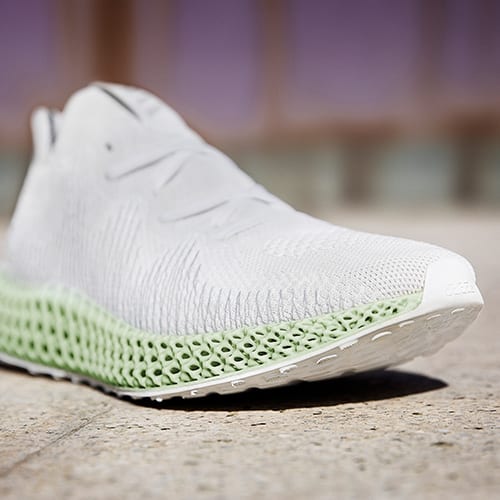
Compared to polyvinyl chloride (PVC), TPU is lighter, more elastic, and more abrasion-resistant. It’s also possible to color and process TPU. It makes sense to choose TPU over PVC from an environmental standpoint because this material is recyclable and frequently used to lower carbon emissions. Also, TPU outpaces most other TPEs in a few key ways. TPU is generally harder, more durable, and more shrink-resistant than most TPEs — plus it is easier to print with and generally promises more accurate results.
On the other hand, however, TPU is more expensive than comparable plastics and some grades of TPU have a relatively short shelf life. Like other TPEs, TPUs must be dried prior to processing. Additionally, TPUs generally have a narrower hardness range than other thermoplastic elastomers and a narrower temperature range for processing, creating certain manufacturability limitations.
Getting Started With TPE and TPU
TPE and TPU are versatile plastics that all product teams should have in their repertoires. However, product teams should be warned not to conflate the two materials. TPEs, a large category of polymers that can be classified as thermoplastic elastomers, are softer than TPU and better suited for applications that must be soft to the touch. TPU, on the other hand, is the subset of TPEs that are tougher and better suited for high-performance applications that require high chemical and abrasion resistance. Product teams must always do thorough research and vetting to ensure they’re choosing the right material for their project. Luckily, an experienced manufacturing partner can make the material selection process much simpler.
When companies partner with SyBridge, they partner with a team of on-demand manufacturing experts who have years of experience bringing products to life using both traditional and additive manufacturing methods. Our team of designers, engineers, and advisors can guide product teams through the material selection process seamlessly, and ensure they always make the right choice — so they can focus on delivering superior products each and every time. Contact us today to get started.
